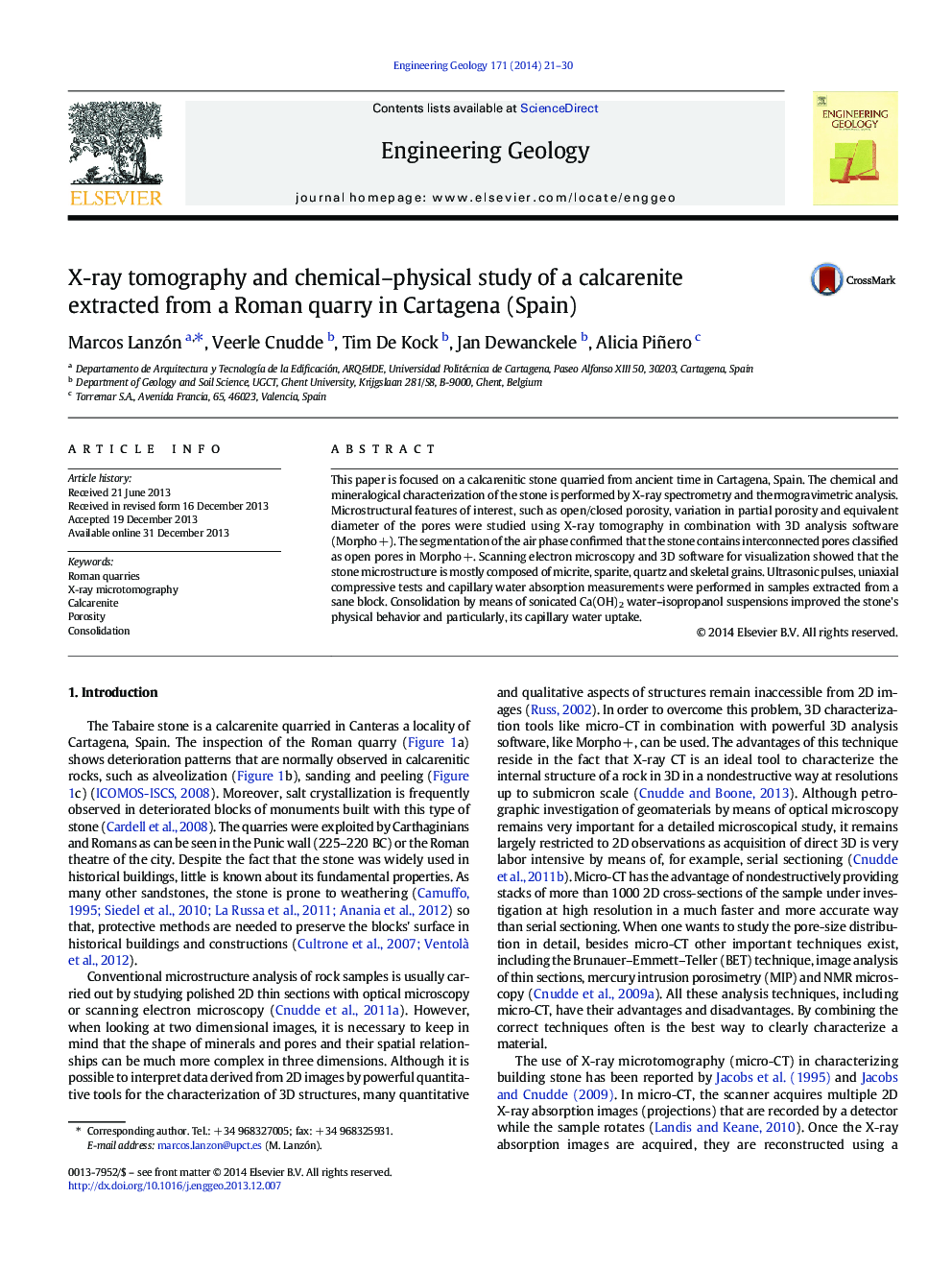| Article ID | Journal | Published Year | Pages | File Type |
|---|---|---|---|---|
| 4743611 | Engineering Geology | 2014 | 10 Pages |
•The Roman quarries of Canteras have been classified as a Cultural Heritage site.•Micro-CT and Morpho + provide valuable information on the microstructure of the stone.•The calcarenite is porous and mostly composed of micrite, sparite, quartz and fossils.•Sonicated lime water–isopropanol suspensions reduced the permeability of the stone.
This paper is focused on a calcarenitic stone quarried from ancient time in Cartagena, Spain. The chemical and mineralogical characterization of the stone is performed by X-ray spectrometry and thermogravimetric analysis. Microstructural features of interest, such as open/closed porosity, variation in partial porosity and equivalent diameter of the pores were studied using X-ray tomography in combination with 3D analysis software (Morpho +). The segmentation of the air phase confirmed that the stone contains interconnected pores classified as open pores in Morpho +. Scanning electron microscopy and 3D software for visualization showed that the stone microstructure is mostly composed of micrite, sparite, quartz and skeletal grains. Ultrasonic pulses, uniaxial compressive tests and capillary water absorption measurements were performed in samples extracted from a sane block. Consolidation by means of sonicated Ca(OH)2 water–isopropanol suspensions improved the stone's physical behavior and particularly, its capillary water uptake.
